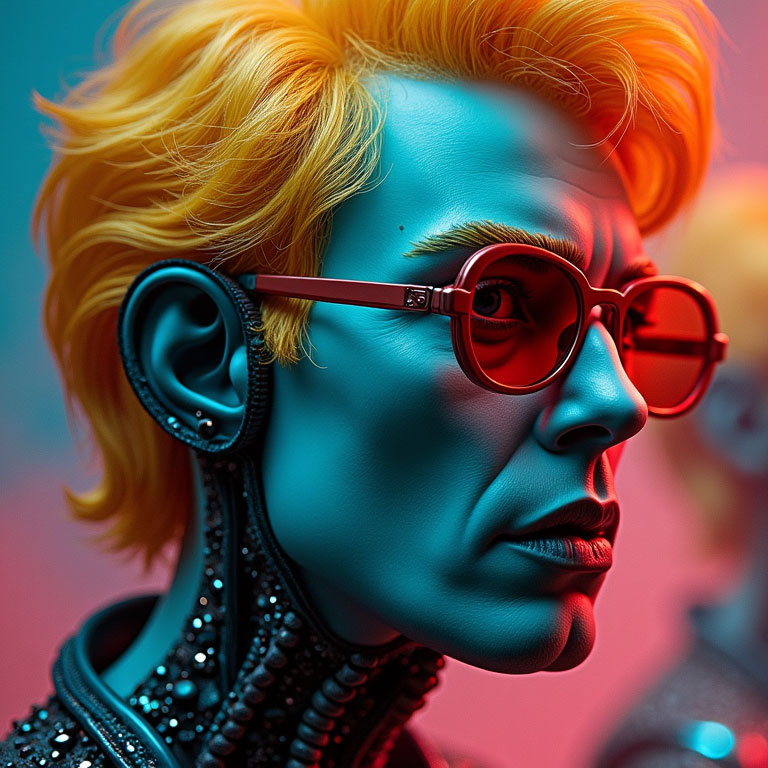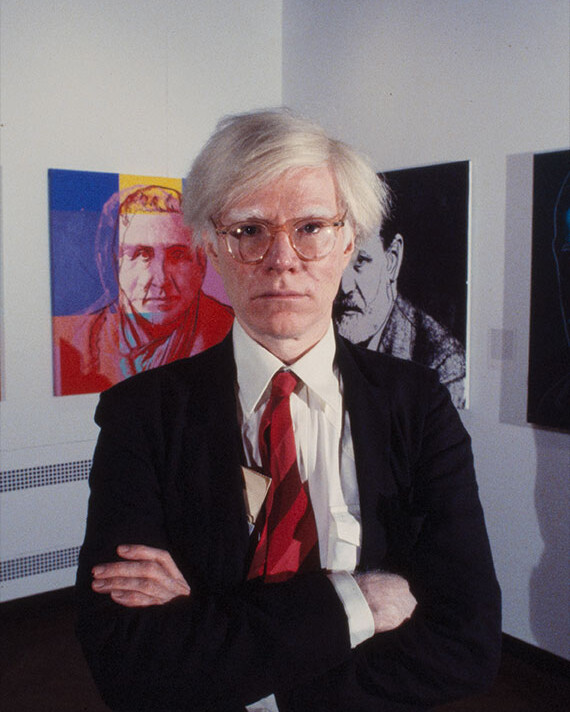
I’ve always been fascinated by the intersection of art, technology, and marketing.
My creative journey started with drawing and street art, evolved into digital media, and has always been influenced by pioneers who blurred the lines between art and commerce.
A significant influence on my creative journey has been Andy Warhol, a master of mass production, branding, and cultural impact.
Warhol understood something that many marketers today struggle with – how to capture attention in a world of oversaturation.
His work wasn’t just about aesthetics. He had a deep understanding of trends, psychology, and consumer behavior.
If he were alive today, I don’t think he’d just be making art. He’d be running the most talked-about digital marketing agency on the planet.
There’s something powerful about looking back at what worked in the past. History has a way of repeating itself, and Warhol’s approach offers some valuable lessons for today’s digital world.
Who Was Andy Warhol?
In case you don’t know who he is, Andy Warhol was one of the most influential artists of the 20th century and a pioneer of Pop Art.
Born in 1928 in Pittsburgh, he turned everyday objects and celebrities into bold, colorful masterpieces, with works like Campbell’s Soup Cans and Marilyn Monroe portraits becoming cultural icons.
Warhol blurred the lines between art and mass production, using silkscreen printing to create multiple variations of his work. His studio, The Factory, was a creative hotspot for artists, musicians, and celebrities.
Beyond painting, he explored film, photography, and multimedia, leaving a lasting impact on both art and popular culture.
The Content Factory: Creativity at Scale
Warhol’s Factory wasn’t just an art studio.
It was a full-on production house, constantly cranking out paintings, prints, films, and celebrity collaborations. He thrived on mass production and understood that the more people see something, the more they remember it.
That same idea applies to digital marketing today. The brands that stay top of mind aren’t the ones posting once in a while. They’re the ones putting out a steady stream of content, keeping their audience engaged across multiple platforms.
Warhol’s method of remixing and repeating ideas mirrors how businesses should be approaching content creation now.

Celebrity Culture and Influencer Marketing
Warhol was obsessed with fame and knew how to turn people into icons.
His portraits of Marilyn Monroe, Elvis Presley, and even mundane objects like soup cans weren’t just about artistic expression. They were about cultural influence.
That’s exactly how influencer marketing works today. People connect with faces more than they do with logos. Brands that understand this align themselves with the right influencers and build trust through personality-driven content.
If Warhol were in digital marketing, he’d probably be experimenting with AI-generated influencers, deepfake ads, and marketing campaigns that push the limits of what’s real and what’s digital.
Repetition and Branding: The Warhol Formula
Warhol had a way of taking something ordinary and making it feel iconic.
He turned repetition into an art form, making sure his work was instantly recognizable.
That’s exactly what branding is all about. A strong brand isn’t just about having a nice logo. It’s about consistent messaging, visuals, and identity. Warhol understood that if something is seen enough times, it becomes part of the cultural fabric.
That same principle still applies today. The brands that people remember are the ones that show up again and again with a clear, recognizable identity.
Experimental Video and the Rise of Short-Form Content
Warhol’s films were different.
Some of them were hours long, barely edited, and focused on the most mundane things. But that was the point. He was playing with time, repetition, and the idea that even the most ordinary moments could be turned into art.
Today, video marketing is all about grabbing attention quickly. TikTok, Instagram Reels, and YouTube Shorts have taken over, and people want content that’s fast, engaging, and visually unique.
Warhol more than likely would have loved this. He’d be making surreal, looping videos that get stuck in your head, playing with unexpected pacing, and creating ads that feel like art pieces.

NFTs, Digital Collectibles, and the New Pop Art
Warhol was one of the first artists to fully embrace the idea of art as a commercial product.
He didn’t see a difference between art and advertising, and that’s exactly what’s happening now with NFTs and digital collectibles.
Brands are already using NFTs to create exclusive digital experiences, limited-edition branded content, and collectibles that people actually want to own.
Just like Warhol’s prints created a sense of exclusivity, today’s digital collectibles are helping brands build deeper connections with their audiences.
I would imagine he would have been all over this, experimenting with blockchain and pushing the limits of what ownership in the digital world really means.
What Can We Learn From Warhol?
Warhol wasn’t just an artist.
He was a marketing genius who understood how culture, media, and psychology all worked together.
If he were in digital marketing today, he’d most likely be:
- Using AI and automation to create and distribute content at scale
- Mastering the art of branding through repetition and recognition
- Turning influencers into pop culture icons with strategic collaborations
- Experimenting with surreal, unconventional video ads that break the rules
- Blurring the line between digital and physical branding through NFTs and interactive content
The tools may have changed, but the fundamentals of creativity and branding remain the same.
The Past as a Blueprint for the Future
I love looking at what worked in the past and finding ways to apply it to today’s digital world.
Some of the most creative and effective marketing strategies come from reinterpreting history in a fresh way.
Warhol’s approach to branding, content, and culture is proof that great ideas never really go out of style.
The way we communicate might evolve, but the psychology of attention, influence, and creativity stays the same.
History repeats itself, and the brands that understand this are the ones that will continue to stand out in an oversaturated digital world.
About The Author
With 20+ years in digital media and marketing, Daniel Travers is the visionary of Redideo Studio, a San Diego-based creative agency. His expertise spans digital marketing, website design, video production, social media, and creative services.
Daniel’s collaborative work includes renowned brands such as iHeartMedia, Disney, Lexus, and more.
He holds a BFA in Photo New Media from the Kansas City Art Institute, along with an AAS in Graphic Communications from St. Louis Community College.
Ready to get your business noticed online?
Let’s make it happen – just hit that Book a Meeting button below!


